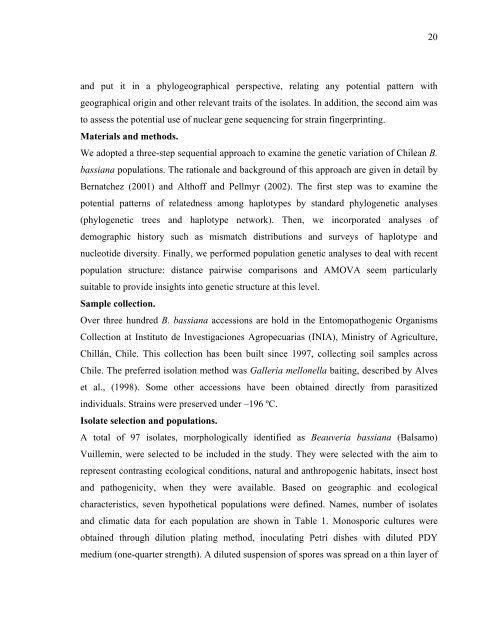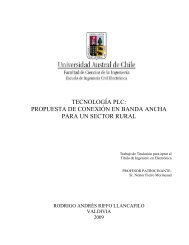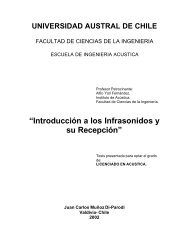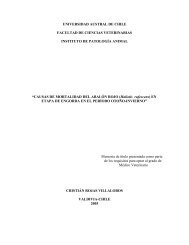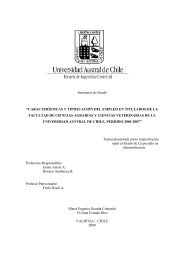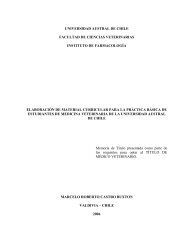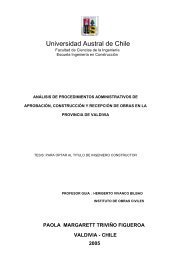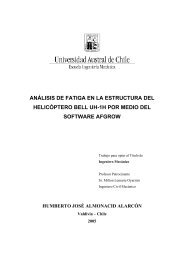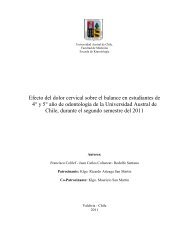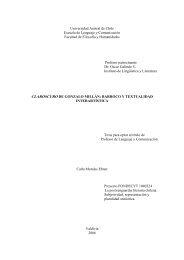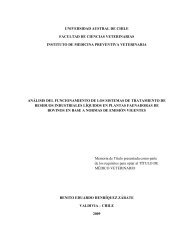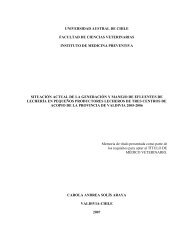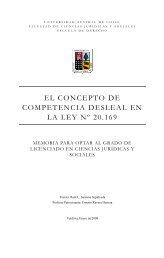Diversidad y control biológico de insectos - CyberTesis UACh ...
Diversidad y control biológico de insectos - CyberTesis UACh ...
Diversidad y control biológico de insectos - CyberTesis UACh ...
Create successful ePaper yourself
Turn your PDF publications into a flip-book with our unique Google optimized e-Paper software.
and put it in a phylogeographical perspective, relating any potential pattern with<br />
geographical origin and other relevant traits of the isolates. In addition, the second aim was<br />
to assess the potential use of nuclear gene sequencing for strain fingerprinting.<br />
Materials and methods.<br />
We adopted a three-step sequential approach to examine the genetic variation of Chilean B.<br />
bassiana populations. The rationale and background of this approach are given in <strong>de</strong>tail by<br />
Bernatchez (2001) and Althoff and Pellmyr (2002). The first step was to examine the<br />
potential patterns of relatedness among haplotypes by standard phylogenetic analyses<br />
(phylogenetic trees and haplotype network). Then, we incorporated analyses of<br />
<strong>de</strong>mographic history such as mismatch distributions and surveys of haplotype and<br />
nucleoti<strong>de</strong> diversity. Finally, we performed population genetic analyses to <strong>de</strong>al with recent<br />
population structure: distance pairwise comparisons and AMOVA seem particularly<br />
suitable to provi<strong>de</strong> insights into genetic structure at this level.<br />
Sample collection.<br />
Over three hundred B. bassiana accessions are hold in the Entomopathogenic Organisms<br />
Collection at Instituto <strong>de</strong> Investigaciones Agropecuarias (INIA), Ministry of Agriculture,<br />
Chillán, Chile. This collection has been built since 1997, collecting soil samples across<br />
Chile. The preferred isolation method was Galleria mellonella baiting, <strong>de</strong>scribed by Alves<br />
et al., (1998). Some other accessions have been obtained directly from parasitized<br />
individuals. Strains were preserved un<strong>de</strong>r –196 ºC.<br />
Isolate selection and populations.<br />
A total of 97 isolates, morphologically i<strong>de</strong>ntified as Beauveria bassiana (Balsamo)<br />
Vuillemin, were selected to be inclu<strong>de</strong>d in the study. They were selected with the aim to<br />
represent contrasting ecological conditions, natural and anthropogenic habitats, insect host<br />
and pathogenicity, when they were available. Based on geographic and ecological<br />
characteristics, seven hypothetical populations were <strong>de</strong>fined. Names, number of isolates<br />
and climatic data for each population are shown in Table 1. Monosporic cultures were<br />
obtained through dilution plating method, inoculating Petri dishes with diluted PDY<br />
medium (one-quarter strength). A diluted suspension of spores was spread on a thin layer of<br />
20


